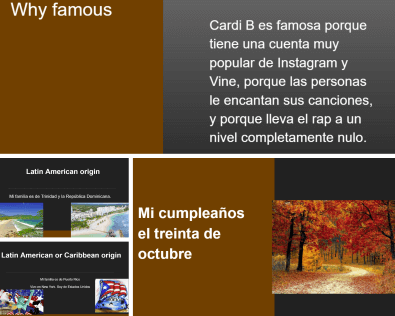Schechter Shavua: March 8, 2021
Communicating Emotions in Early Childhood
The children in the T'marimclass (EC3-4) have been enjoying a new space in their classroom: a calming space. Calming spaces help children to practice identifying their feelings and emotions to better manage stress, self-regulate, and control their impulses. Having a space designed to support them emotionally and physically helps them feel safe and comfortable, allowing them to let down their guard to process different feelings. The T’marim quiet space is designed for one student at a time... it is like a tropical oasis in the class with plants and sand!
The teachers first modeled this space for the children. When they first enter the calming space, the children point to the emoji on a feeling chart that best represents their emotional state. Next, the children can create designs in the sand using scrapers, chopsticks, a brush, colored gems, and stones… a very relaxing activity. We added pictures of mandalas to this space for additional design inspiration. When the child is finished, they clean up the space. Lastly, the student points to their emotion on the feeling chart to summarize how he/she feels as they leave the calming space.
Learning how to communicate one’s feelings and emotions can be difficult, but calming spaces such as this help children practice mindfulness and develop the skills they need to identify their emotions and communicate them when necessary. Stronger communication skills help them form stronger relationships with others and develop skills in empathy.
Researching Contributions of Afro Latinos to Learn Spanish
 To celebrate Black History Month and learn more about the contributions of Afro Latinos, the 6th grade Spanish class conducted research about famous Afro Latinx people and presented information to the class via Google Slides and a SeeSaw video. They researched Afro Latino athletes and celebrities from Brazil, Argentina, Cuba, Dominican Republic and Puerto Rico including soccer players Pele, Maradona and Neymar, baseball player David Ortiz, basketball player Carmelo Anthony, musicians Maxwell and Cardi B, model Yaya Da Costa and actresses Zoe Saldana and Christina Milian.
To celebrate Black History Month and learn more about the contributions of Afro Latinos, the 6th grade Spanish class conducted research about famous Afro Latinx people and presented information to the class via Google Slides and a SeeSaw video. They researched Afro Latino athletes and celebrities from Brazil, Argentina, Cuba, Dominican Republic and Puerto Rico including soccer players Pele, Maradona and Neymar, baseball player David Ortiz, basketball player Carmelo Anthony, musicians Maxwell and Cardi B, model Yaya Da Costa and actresses Zoe Saldana and Christina Milian.
As part of the project, students learned how to express in Spanish names, nicknames, place of origin, residence, age, birthdays and professions.
Join Us THIS SUNDAY to Celebrate 50 Years of Schechter!
 Solomon Schechter Day School is proud to be celebrating our 50th anniversary this year! We are kicking off the festivities with a virtual celebration this Sunday, March 14th from 8:00pm to 9:00pm. The event will feature comedian Joel Chasnoff, distinguished speakers, and more. Please click HERE for sponsorship information and tickets. For questions, contact Sherri G. Pliskin, Director of Development at spliskin@ssds-hartford.org.
Solomon Schechter Day School is proud to be celebrating our 50th anniversary this year! We are kicking off the festivities with a virtual celebration this Sunday, March 14th from 8:00pm to 9:00pm. The event will feature comedian Joel Chasnoff, distinguished speakers, and more. Please click HERE for sponsorship information and tickets. For questions, contact Sherri G. Pliskin, Director of Development at spliskin@ssds-hartford.org.
Solomon Schechter Day School
of Greater Hartford
26 Buena Vista Road
West Hartford, CT 06107
© Solomon Schechter Day School of Greater Hartford | Site design Knowles Kreative




